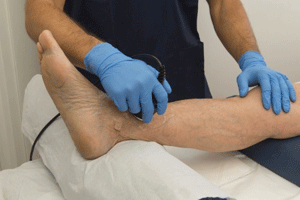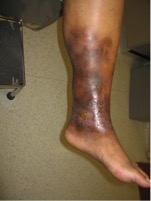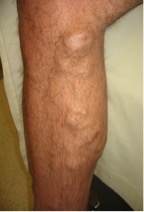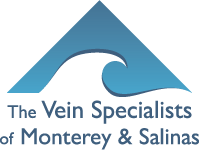What Are the Symptoms and Causes of Chronic Vein Disease

Chronic vein disease is caused by failure of vein valves to keep the blood in your legs flowing correctly towards your heart. Instead, the blood flows back down the leg, pressurizing the venous system below, and causing high pressure in the veins (venous hypertension, not arterial hypertension or high blood pressure).
Varicose and spider vein symptoms are usually worse with standing or sitting because the venous valves do not prevent flow back down the leg. These symptoms usually improve with leg elevation because the venous blood flows correctly towards the heart even though the venous valves are not working correctly.
Twenty-five percent of adults have varicose veins and/or chronic vein disease. Not all patients have risk factors to have the disease, but the common risk factors include:
- Genetics (family history)
- Aging: the risk to have varicose veins increases each decade of life
- Standing occupation (such as teaching or postal work)
- Number of pregnancies: the greater the number, the higher the risk
- Being overweight increases the risk for leg swelling and calf skin changes
The natural history of chronic vein disease without treatment is to worsen gradually over time. Patients develop more varicose veins, more pain and discomfort, more skin changes, and more areas of abnormal flow on ultrasound.
Conservative Measures for Chronic Vein Disease
The first step in managing chronic vein disease is performing conservative measures:
- Compression stockings improve vein symptoms for most vein patients. We use stockings after every vein procedure for 1-2 weeks. Most insurance companies require a documented trial of conservative measures under physician supervision before they will approve any vein treatment. You can use compression stockings whenever you want, but they are usually most effective on days when you are sitting or standing a lot or traveling many hours in planes and cars.
- Leg elevation usually helps reduce vein symptoms. If you elevate your legs above your heart, the blood will flow correctly even if the venous valves have failed.
- Exercise that is good for your general health is good for your vein health also. Walking is good exercise to help with chronic vein disease since it strengthens the calf muscle and improves ankle range of motion, which helps pump more leg blood back to the heart.
- You can take over the counter pain medicines to help with pain. As long as you tolerate it, ibuprofen or naproxen tend to work well for vein symptoms. Make sure you stick to recommended doses. It is generally best to take these medicines with food, because they can upset your stomach.
Vein Treatments for Chronic Vein Disease
Most patients need an ultrasound study (vein reflux study or vein mapping) before vein treatment. This ultrasound study takes one hour for one leg and 1½ hours for both legs. During the study, an ultrasonographer maps the flow in all your major veins. After the study, you will meet with the physician to plan the details of your treatment.
Insurance requirements for coverage of varicose veins typically include all of the following: significant pain or discomfort; ultrasound finding of abnormal flow in one or more saphenous veins; and documented use of conservative measures as discussed above.
Vein treatment options include the following:
- Heat ablation, such as laser ablation or radiofrequency ablation, is performed on the major veins draining the skin (saphenous veins) if the valves have failed and are causing leg symptoms. During a heat ablation, we close the abnormal vein to improve symptoms and close the vein pressuring your visible varicose veins. A heat ablation takes an hour and is performed under local anesthesia. A mild sedative is often given to make the procedure as comfortable as possible. Because of the sedative, you should not drive until the next day after the procedure. You should do all your regular moderate activities after the procedure. Avoid strenuous exercise, like running or weight lifting, for one week. Patients often have mild pain after a heat ablation.
- Sclerotherapy, or chemical ablation, is performed to close the visible varicose veins and other abnormal veins not closeable with heat ablation. A sclerotherapy session takes 30 minutes and no anesthesia is needed. During sclerotherapy, we usually inject many veins. We often cannot treat every abnormal vein because we can only safely give you a limited amount of the medicine (the dose) in one day. It usually takes three sessions, or even more in occasional cases, to get the best results. There is usually little or no pain or discomfort after sclerotherapy.
- Phlebectomy is the physical removal of varicose veins under local anesthesia. It is used to remove medium to large varicose veins. A mild sedative is often given to make the procedure as comfortable as possible. Because of the sedative, you should not drive until the next day after the procedure. Phlebectomy usually takes 30-45 minutes. There is usually mild pain after the phlebectomy procedure.

Picture of typical venous skin changes

Varicose veins on a leg
